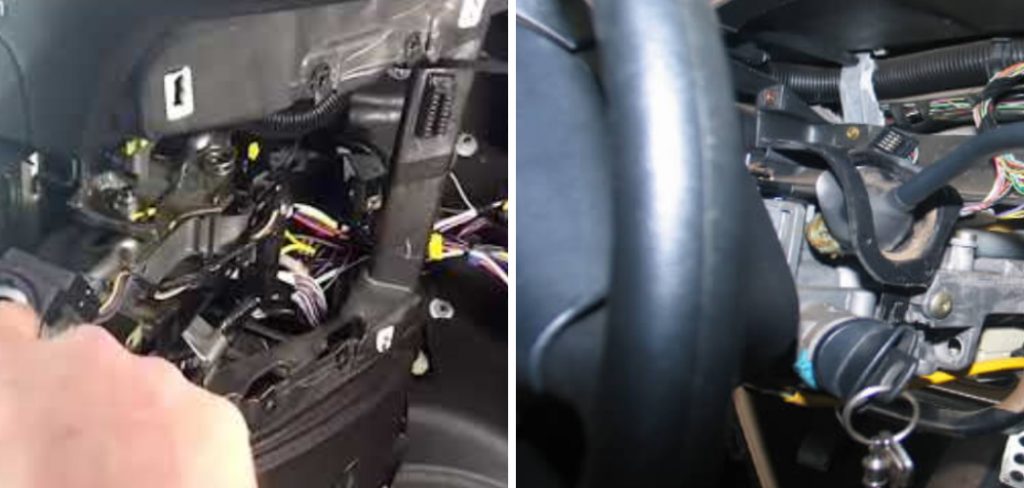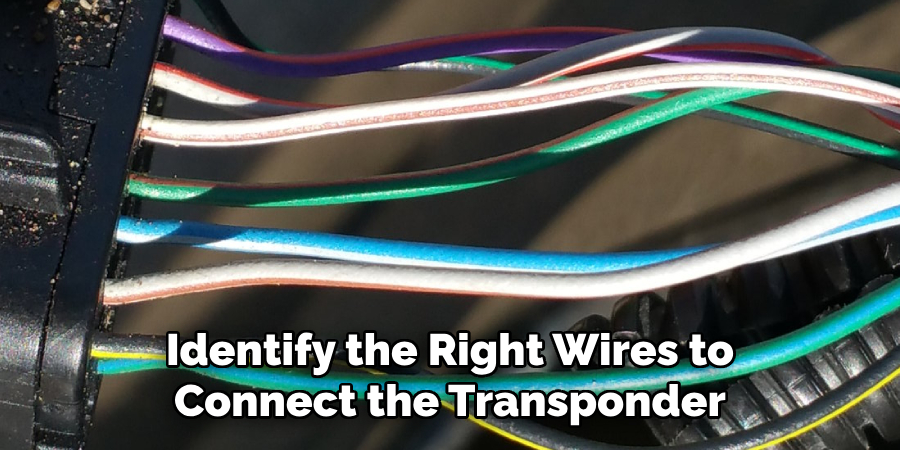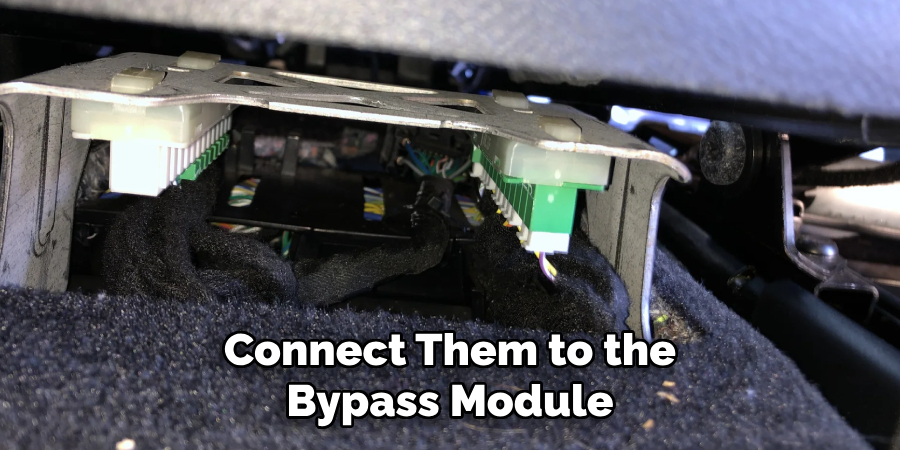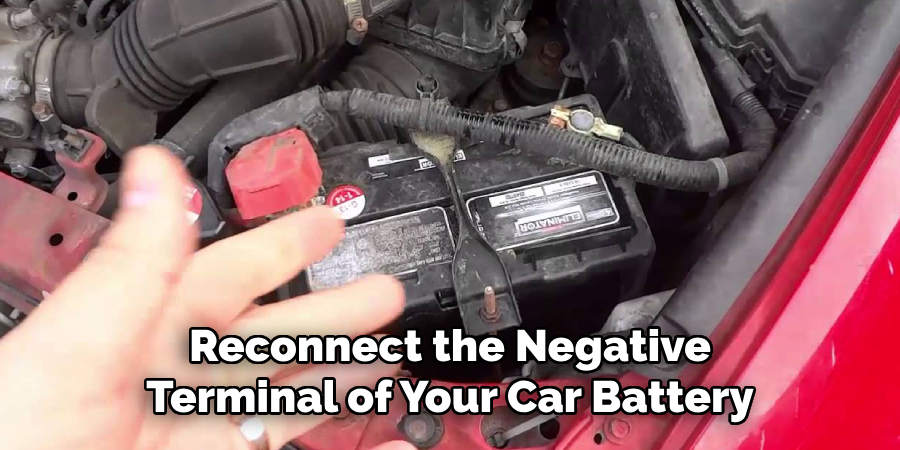Are you looking to install a transponder bypass system for enhanced security? If so, look no further! We have all the information you need to ensure that your vehicle is outfitted with the best possible protection. In this post on how to wire transponder bypass, we’ll walk you through step-by-step instructions on how to securely wire a transponder bypass system and understand the various components involved.

With our guidance, you can be confident in knowing that your car is fully protected from unauthorized access even if it has an advanced security system installed by manufacturers. So get ready – here’s everything you’ll need to know about wiring up a transponder bypass!
What Are Transponder Bypass Systems and Why Do You Need Them?
Transponder bypass systems are security devices that are used to prevent unauthorized access or use of a vehicle. They are designed to allow only the owner of the car with the right key fob to start the engine, ensuring that your car is safe from theft.
But why would you need a transponder bypass system if your vehicle already has an advanced security system? Well, while most modern cars come equipped with a transponder key that communicates with the engine control unit (ECU) to allow engine start-up, there are instances where this system may fail or malfunction. In such cases, having a transponder bypass in place can save you from being stranded without access to your own vehicle.
11 Step-by-step Guidelines on How to Wire Transponder Bypass
Step 1: Gather the Necessary Tools and Materials
Before you begin, make sure you have all the required tools and materials for the installation. This includes a transponder bypass kit, wire strippers, electrical tape, and wire cutters. But most importantly, make sure you have your vehicle’s specific wiring diagram. It will help you identify the right wires to connect the transponder bypass system.

Step 2: Locate the Wiring Harness
The first step in wiring a transponder bypass is to locate the wiring harness. This is usually located near the ignition switch, and it contains all of the wires that will need to be connected to the bypass module. You can easily find the wiring harness by referring to your vehicle’s manual or by searching online. But, if you’re unsure, it’s always best to consult a professional.
Step 3: Disconnect the Negative Terminal of Your Car Battery
Before you start working on any electrical connection, it is crucial to disconnect the negative terminal of your car battery. This will prevent any electrical short circuits or damage to your vehicle’s electronic components. However, if your vehicle has a code-protected radio, make sure you have the code to reset it as disconnecting the battery may cause it to require a security code.
Step 4: Identify the Wires
Use your wiring diagram to identify the wires that need to be connected to the bypass module. These wires are usually color-coded, so it should be fairly easy to find them. It is essential to make sure you have the right wires, so double-check before proceeding. But, if you’re unsure, do not hesitate to consult a professional.
Step 5: Strip the Wires
Using your wire strippers, strip a small section of insulation from the ends of the wires that need to be connected to the bypass module. This will allow you to make a secure connection. It’s essential to strip only the necessary amount of insulation and not damage the wire itself. This will prevent any electrical problems in the future.
Step 6: Connect the Bypass Module
Once you have stripped the wires, it’s time to connect them to the bypass module. Take each wire and connect it to its corresponding color-coded terminal on the module. Make sure to secure the connections with electrical tape or heat shrink tubing for added protection. Otherwise, you risk having loose connections that can cause problems later on.

Step 7: Connect the Bypass Module to the Vehicle’s Wiring Harness
Now that both ends of the wires are connected to the bypass module, it’s time to connect it to the wiring harness. Use your wiring diagram to determine which wires from the wiring harness need to be connected to the bypass module. Once you have identified them, use wire connectors or soldering techniques for a secure connection.
Step 8: Test the Connections
Before you proceed with installing the bypass system, it’s essential to test the connections. Reconnect the negative terminal of your car battery and turn on the ignition switch with your key fob. If successful, you should be able to start your vehicle without any issues. It’s always wise to do a test run before completing the installation.
Step 9: Mount the Bypass Module
Once you have tested and verified that all connections are working correctly, mount the bypass module in a secure location inside your vehicle. Make sure it is away from any heat sources and protected from water or other external elements. But, avoid obstructing the module as it needs to communicate with your vehicle’s ECU.
Step 10: Reconnect the Battery Terminal
Now that everything is wired up and mounted correctly, you can reconnect the negative terminal of your car battery. Although, remember to input the code for your radio if it requires one. You can now test the bypass system one last time to ensure that everything is working correctly. It’s always better to be safe than sorry.

Step 11: Enjoy the Added Security and Convenience
Congratulations, you have successfully wired a transponder bypass system in your vehicle! You can now enjoy the added security and convenience of having a backup plan in case your transponder key fails. But, always remember to consult a professional if you’re unsure or uncomfortable with any step of the process. It’s always better to have an expert guide you through the installation for a safe and reliable outcome.
Following these step-by-step guidelines on how to wire transponder bypass, you can easily wire a transponder bypass system for your vehicle. This added security feature provides peace of mind and ensures that you always have access to your car, even in the case of a transponder key malfunction. It is a simple process that can save you from potential inconveniences and expensive repairs in the future.
So, if your car has a transponder key system, consider wiring in a bypass to be better prepared for any unforeseen circumstances. So next time you find yourself in a situation where your transponder key is not working, you’ll know exactly what to do!
Frequently Asked Questions
Q: Can I Install a Transponder Bypass System on My Own?
A: Yes, you can, if you have the necessary tools and knowledge. However, it’s always best to consult a professional for accurate installation and to avoid any potential damages or complications. YOu can also refer to your vehicle’s manual or search online for specific instructions on how to wire a transponder bypass system for your car model.
Q: Do All Vehicles Require Transponder Bypass Systems?
A: No, not all vehicles have transponder key systems. It is mostly found in newer vehicles as an added security feature. To know if your car has a transponder system, you can refer to your vehicle’s manual or consult a professional.

Q: Can I Remove the Transponder Bypass System If I No Longer Need It?
A: Yes, you can remove the bypass system if for any reason you no longer want it. However, it’s not a recommended practice as it can cause damage to your vehicle’s wiring and electrical components. It’s best to have a professional remove it for you if needed.
Q: What Happens If My Transponder Key Fails While Driving?
A: In such a scenario, having a transponder bypass system installed allows you to continue driving your vehicle without the need for the key. However, do keep in mind that you will not be able to start your car if you turn off the ignition. It’s best to have your key replaced or repaired as soon as possible.
Conclusion
All in all, wiring a transponder bypass has definitely earned its place as one of the more difficult and challenging tasks available to an experienced DIYer. However, with the right tools, equipment, and information on hand, you can successfully bypass your car’s transponder and keep your vehicle out on the road. If you have any questions or doubts about your ability to handle the job yourself, don’t hesitate to reach out to an expert for assistance.
Committing to taking care of auto maintenance needs can save you a lot of money in the long run and ensure that your car is running safely and efficiently down the line. So why wait? Get started on wiring your transponder bypass today! Thanks for reading this article on how to wire transponder bypass.
About
Safety Fic is a distinguished figure in the world of Diy design, with a decade of expertise creating innovative and sustainable Diy solutions. His professional focus lies in merging traditional craftsmanship with modern manufacturing techniques, fostering designs that are both practical and environmentally conscious. As the author of diy, Safety Fic delves into the art and science of Safety Fic-making, inspiring artisans and industry professionals alike.
Education RMIT University
(Melbourne, Australia) Associate Degree in Design (Safety Fic) Focus on sustainable design, industry-driven projects, and practical craftsmanship. Gained hands-on experience with traditional and digital manufacturing tools, such as CAD and CNC software.
Nottingham Trent University
(United Kingdom) Bachelor’s in diyfastly.com and Product Design (Honors) Specialized in product design with a focus on blending creativity with production techniques. Participated in industry projects, working with companies like John Lewis and Vitsoe to gain real-world insights.
Publications and Impact
In diy, Safety Fic his insights on indoor design processes, materials, and strategies for efficient production. His writing bridges the gap between artisan knowledge and modern industry needs, making it a must-read for both budding designers and seasoned professionals.
